|
|
|
|
Any Lucy Bronze fans in the house? Mm, yeah, thought so. She's pretty ace, ain't she?
|
While I didn't exactly visit Northumberland because I wanted to have a nosy into her past life, I did think about her a little bit while I was there, trying to understand what environment made this hero of mine. Lucy has always loved football and now she's one of the world's greatest. It's a wonderful story and I've had the best time writing it all down.
|
|
|
|
|
|
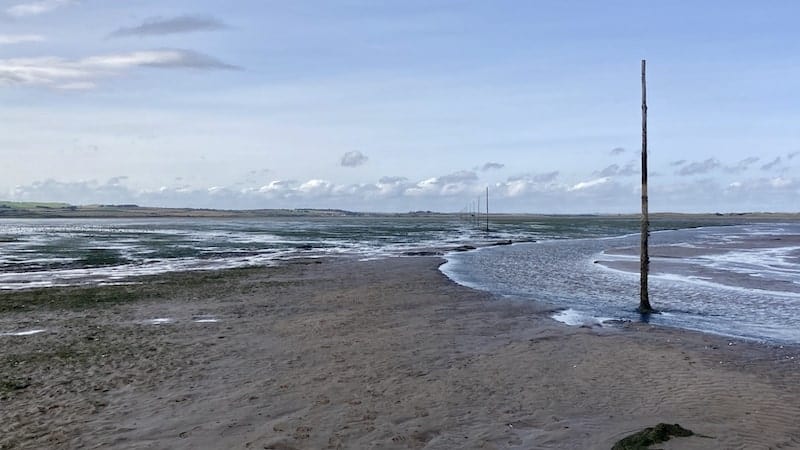
|
The causeway which connects Lindisfarne to mainland England is inaccessible twice a day. For six hours at a time, the water is so high that you can’t walk or drive to or from the island. You risk losing your life if you try, or calling out a rescue team that has better things to do than save the lives of people who think they can outsmart nature.
|
When I read that Lucy Bronze grew up here, on Lindisfarne, on this wild, mystical island which is governed by the sea, I imagined her anxiously calling up the stairs to her mum, eager to get the car running, calculating their crossing, the tide timetable etched in her young mind, obsessing over this precious path which connected her to the mainland where she played football, which sometimes disappears.
|
I visited in September. Low tide reveals the Pilgrim’s Way, wooden poles staked in the sand which guide the faithful to the island priory which once housed the bones of holy people. Barefoot I walked through bogs and streams, ankle deep in water and in mud, a journey imperilled by the moon, a careful dance in step with the tide. The wind bullied my ears and screamed in my head, sent visions across the surface of the water like fire, like smoke, like air. Barnacles clung to the feet of the poles which I used for balance as I cleaned my legs. Mud washed away while inky water stuck hairs to my legs in short black wiggles.
|
Stepping onto Lindisfarne, I couldn’t make it fit, my memory of Lucy at the World Cup, aged 31, frantically searching for a fix at Stadium Australia, and this tiny island inflated by history, by its sacred energy, by the expectation of its curious visitors. This anomaly on the coastline once flattened by Vikings now regrown and revered by its loyal habitants.
|
|
How could there be space for football here?
|
|
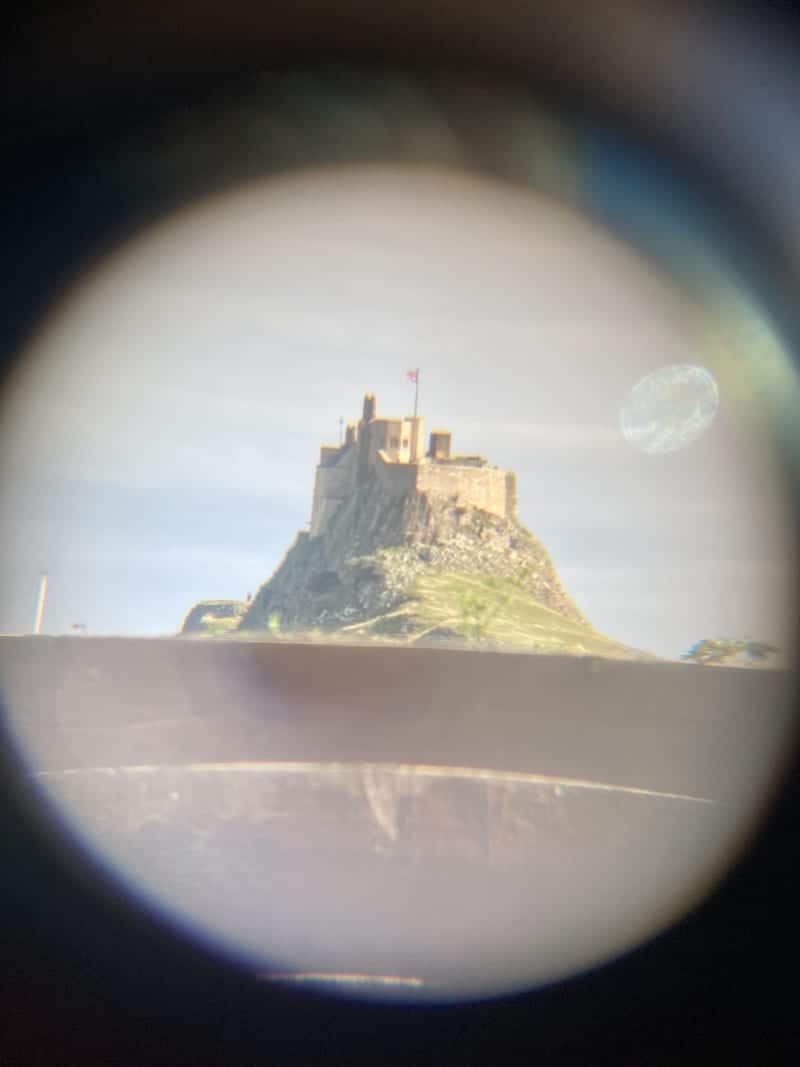
|
Lucy’s grandmother had been the caretaker of Lindisfarne Castle, a ruin from the 16th century rebuilt by a rich man in the 20th. Seated on a volcanic mound, the castle casts a striking silhouette, the icon of the island, the main character in this remote landscape, which holds itself at an arm’s length from the rest of us, set aside by the watery channel that comes and goes and cuts us off and invites us back two times a day.
|
Once you step out of the tiny village, away from the ruins and the castle and the pubs and the coaches, the business of the daytrippers disappears. Bordered by vast sand dunes which keep the hidden sea a distant secret sound, the island is only grass and weeds, hairy caterpillars and birds under a great big sky. Not a football pitch in sight.
|
|
This was where Lucy asked to have the stabilisers taken off her bike at the age of two. Her brother, two years older than her, was riding without them — so she had to do that too. It wouldn’t do for him to be getting too far ahead. From this young age she was locked into competition with Jorge and was soon obsessed by the need to beat her brother at football, doing kick ups in the kitchen while she waited for the kettle to boil, her quest for an edge as insistent as the cycle of wet and dry.
|
|
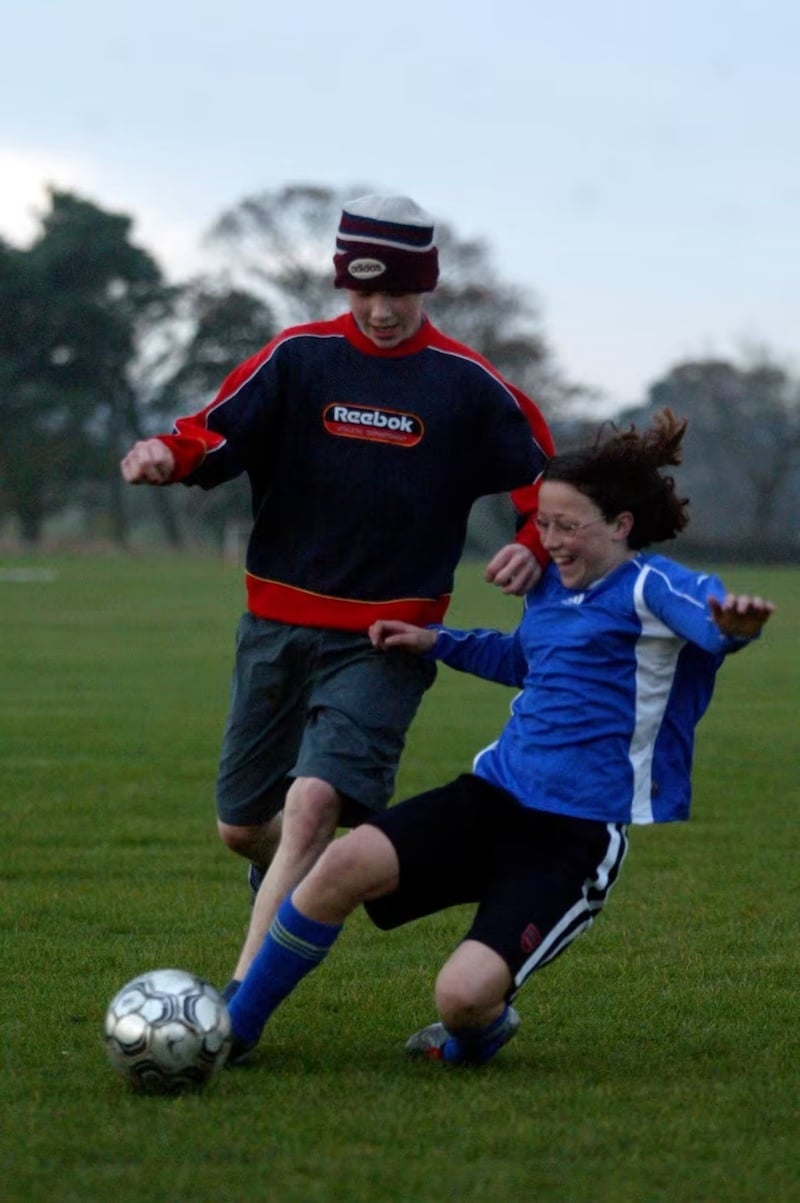
|
Lucy was 10 before her mum bought her first pair of boots from Argos. She’d moved off the island by then, to the mainland, to Belford, a village of just one thousand inhabitants. You can see Lindisfarne Castle from Belford, but my visions of young Lucy, enraged by the sea, stamping her feet on the shore as the sinking causeway kept her from her game were pure fiction.
|
She had all the roads she needed to get to Alnwick Town, where football was the making of this shy daughter of the island. Lucy’s family were never into football much. Thinking she’d look pretty in frilly white socks, mum Diane had tried to get her daughter into tennis — but Lucy clung desperately to her shinpads, and it wasn’t long before mum was convinced of football’s power to bring her daughter out of her shell. Off the pitch, she never spoke much but she made boys cry when she chased them down, tackling hard, driven by a desire to stop anyone scoring against her.
|
Football gave Lucy confidence, and Lucy gave football love.
|
The push and pull of the moon couldn’t keep her from football, but the FA could, determining that at the age of 12, Lucy couldn’t play with the boys any more.
|
|
At the time, a forthright young Lucy told Newcastle's Chronicle newspaper: “They don't want me to play because I'm a girl and they say I'm too old to play with the lads. I don't think it's right, I should be allowed to play with them if I want to. There's no reason why I shouldn't. I'm quite a good player and if the coach wants me to play I don't see what the problem is."
|
|

|
Mum Diane didn’t want her daughter to lose this space where she knew her worth, so spent hours at her PC researching places where Lucy could play football. They’d escaped the 180-strong micro-community of Lindisfarne, but still, the entire Northumberland population numbers at 320,000, less than half of the number of people who live in the city of Leeds. Girls teams were few and far between and the powers-that-be were adamant about 12-year-olds mixing. It was plain that Lucy was brilliant. Intent to keep her playing, her coach opened a discrimination case with the FA in the hopes they’d make an exception for this tenacious talent.
|
It didn’t work, which left the Bronze family committed to regular travel to Sunderland. Dad Joaquim collected Lucy from school, fed her in the car, sent her straight to bed on her return. Three times a week they’d make these 90 minute pilgrimages up and down the A1.
|
|
Just as worshippers tire of wet feet, night after night of catching crumbs in her boot bag got the better of Lucy, and as soon as she was old enough, she found an alternate mode of devotion, cutting down her Sunderland sessions and joining an under 14 girls team on the near side of Newcastle, in Blyth.
|
At Blyth Town, she refused to tie up her hair to play. She inherited the strong will of her Mum and kept it throughout her career. “If I don't make the England team before my 22nd birthday then I'm off to play for Portugal,” she had determined aged 16, watching with frustration as her England youth teammates progressed to the senior Lionesses without her.
|
|
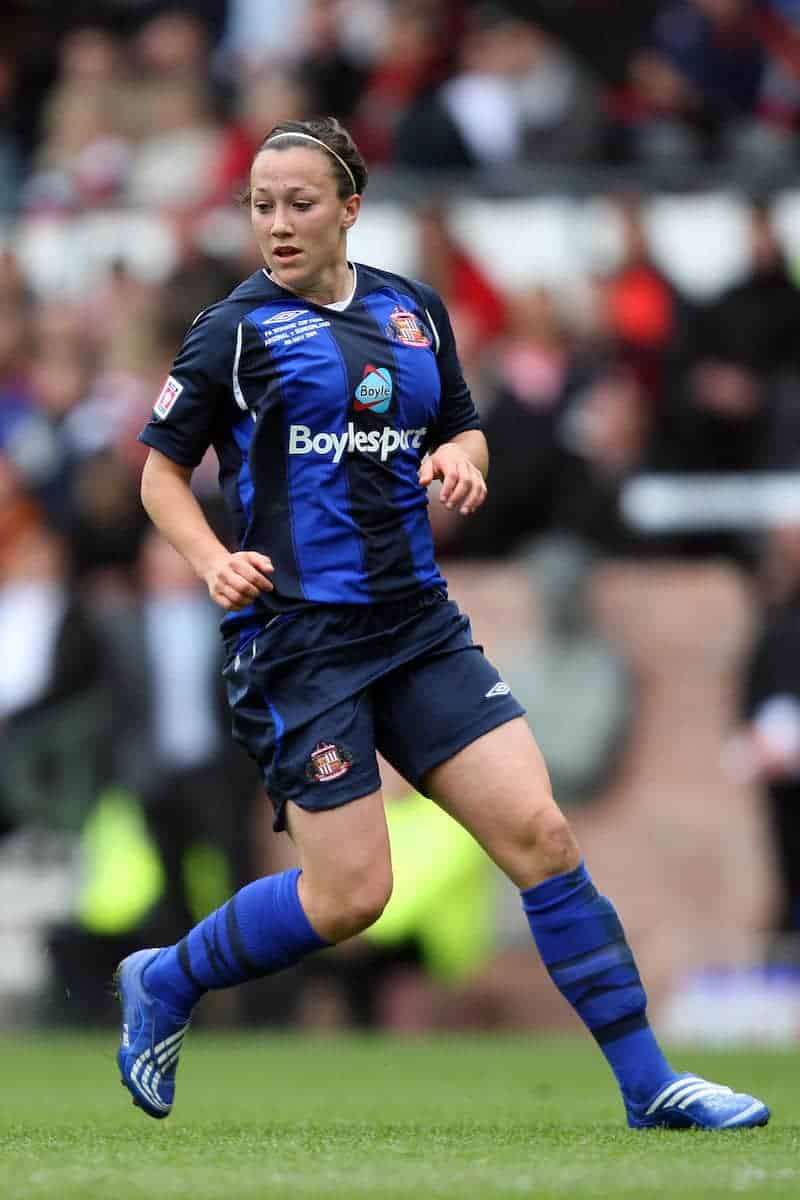
|
For some reason, England manager Hope Powell was intent on keeping Lucy adrift. Someone at the Portuguese FA had messaged her mum on Facebook, inviting Lucy to represent the country where dad Joaquim was born. Playing for England was her dream but life on the island set Lucy up well for a career that would be measured out in seasons, four-year playing contracts and ligaments that will expire long before the brain gives out. This window of opportunity would close, and there wouldn’t be another one opening up in six hours.
|
|
Each year reckless tourists are marooned on the Lindisfarne causeway, at the mercy of the sea and anyone who can pluck them from the water and take them the rest of their journey, leaving behind the wreckage of a vehicle they hoped could outrun the oncoming ocean.
|
|
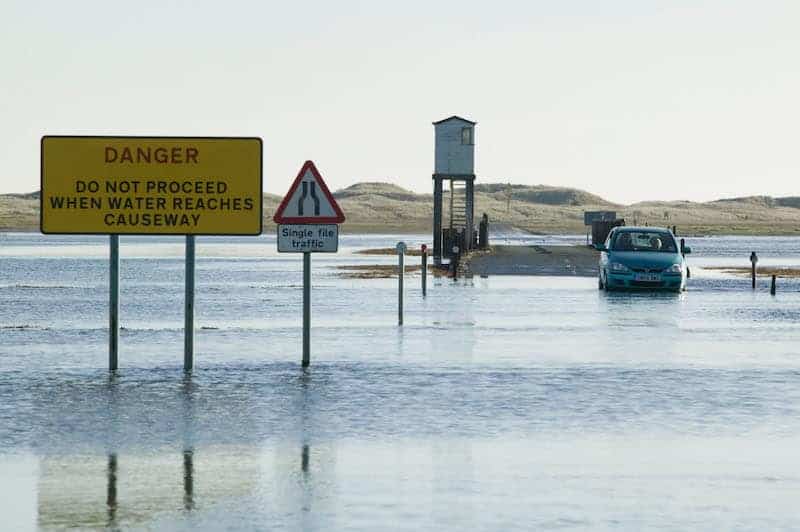
|
Powell cut it extremely fine. England almost lost Lucy to the Iberian peninsula forever, but she got her senior debut four months before her 22nd birthday, a late dash, a gamble that has paid out handsomely to the Lionesses ever since.
|
Lindisfarne is some way from Wembley, so it’s little surprise that Lucy’s first experience of a game at the so-called home of football was one she was playing in. In 2014, a record crowd of 45,000 showed up to watch Lucy partner with Steph Houghton at centre-back as they conceded three goals in a friendly against European Champions Germany.
|
Big crowds are standard, now. In September, 40,000 fans travelled to the Stadium of Light to watch Bronze score a diving header against Scotland — fellow Northumbrains imitating teenage Lucy’s schoolnight journeys to training in Sunderland, many arriving from further afield.
|
In 2020, Diane Bronze spoke to the FA about Lucy’s journey to help promote Wildcats, an FA programme which gives girls aged between 5 and 11 opportunities to play football all over the country — today, Northumberland has seven licensed centres.
|
|
"With Lucy playing internationally now, you still want to cry when you hear that national anthem — I think I'm still in a state of disbelief because I look and I think, 'is that really my little girl?'” Diane said.
|
At Alnwick Town, there’s a plaque which honours Bronze’s success as part of the ‘where greatness is made’ campaign. It ought to read ‘where greatness nearly died’. The determination of Lucy Bronze’s family not to let their football-crazy daughter get cut off from the sport she loves ensured she joined a generation of players who made girls feel more connected to football than ever.
|
|
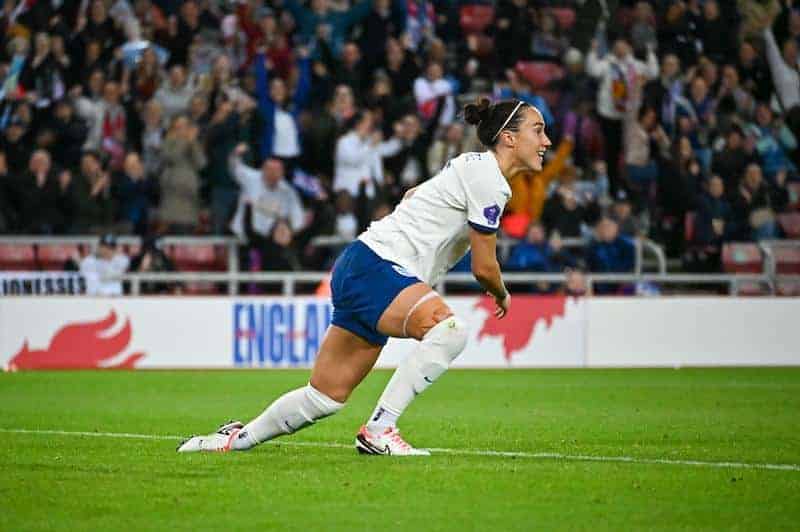
|
|
|
|
|
|
|
|
|
|
|
|
|
|
|
|
|
- Coupla big fixtures in round two of the Women's Super League
- On Friday night Man Utd play Arsenal, kick off 7.30pm
- Sunday lunchtime Man City host Chelsea, kick off 12.30pm
- Leeds United Women travel to Hull City on Sunday for a six-pointer at the top of Division One North. A win would put the Whites into second.
- ...Leeds are in action AGAIN on Wednesday night as they face FC United of Manchester at home in Garforth, kick off 7.45pm
- Panini are working in partnership with the FA to bring us the first ever Women's Super League sticker collection
- It will comprise almost 350 stickers featuring players from all 12 teams, each of which will have one SHINY sticker
- These come out in December so START SAVING NOW x
|
|
|
|
|
|
|
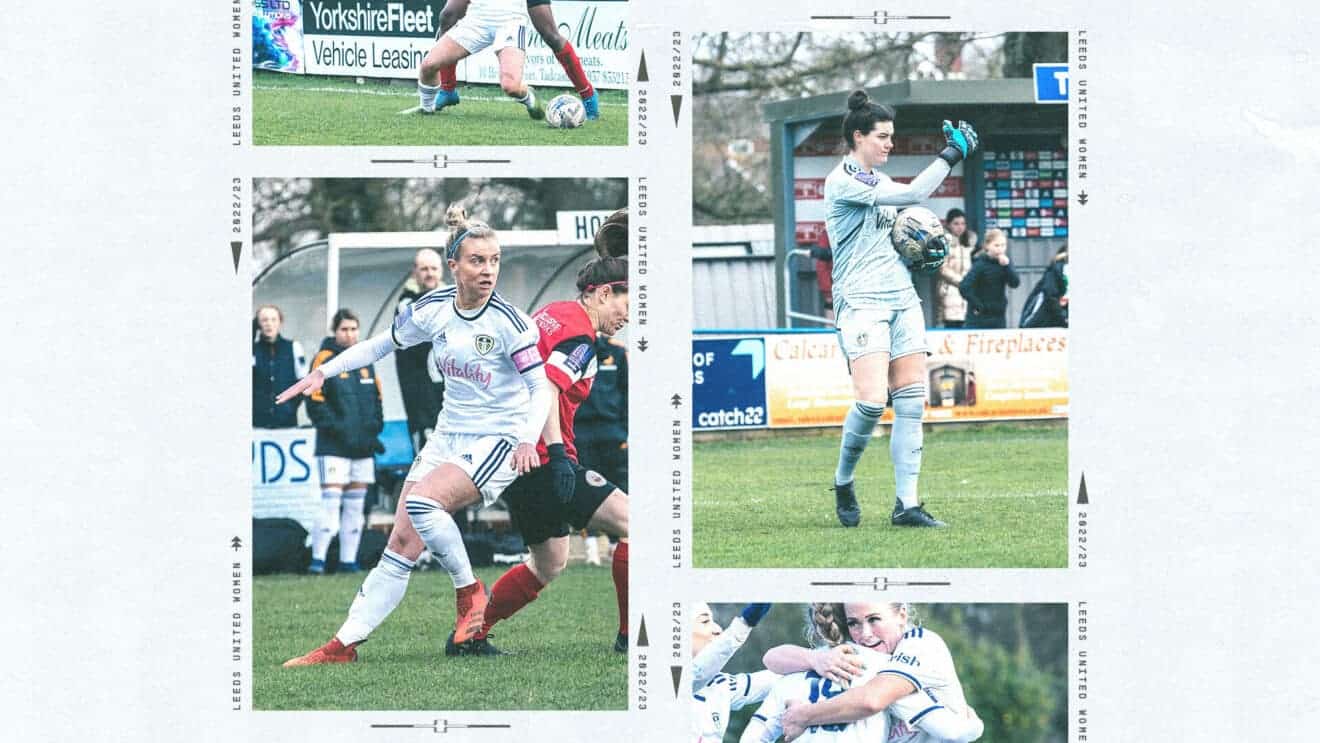
|
The right moment
|
|
If I were playing in a team against Leeds United I would simply stop letting them put Jess Rousseau into one-v-ones with the goalkeeper.
|
|
|
|
|
|
|
|
|